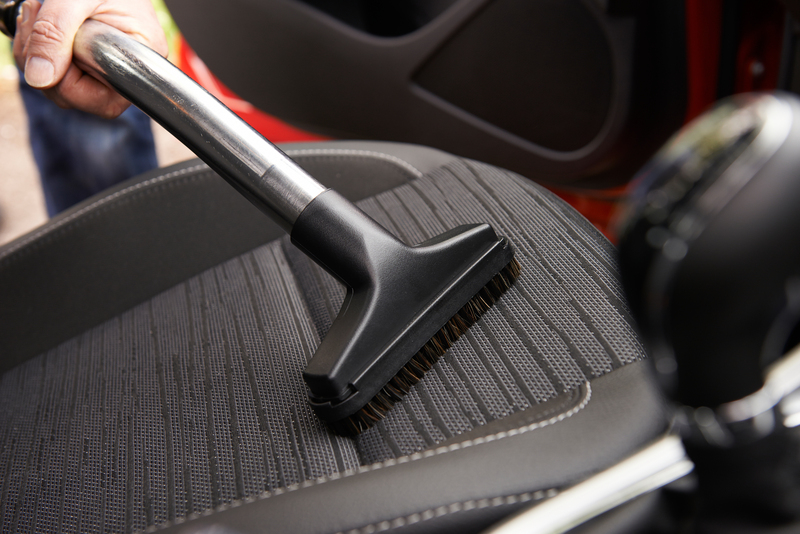Grease-Free Bliss: Your Ultimate Guide to Cleaning Enamel Oven Trays
Posted on 22/05/2025
Grease-Free Bliss: Your Ultimate Guide to Cleaning Enamel Oven Trays
Are your enamel oven trays looking a little worse for wear? Are stubborn grease stains and baked-on food residues making home cooking less enjoyable? If so, you're in the right place. Welcome to your ultimate guide to achieving grease-free bliss by effectively cleaning and maintaining your enamel oven trays.
Why Enamel Oven Trays Deserve Special Attention
Enamel oven trays are a common feature in modern kitchens. With their durable and aesthetically appealing surfaces, they make baking and roasting a breeze. But grime, oil, and food remnants can build up quickly, leading to unsightly stains, unwanted odors, and even potential hazards. Learning how to clean enamel oven trays properly can help you prolong their lifespan and ensure delicious, safe meals every time.
What Makes Enamel Oven Trays Unique?
The secret lies in the construction: a metal (usually steel) base coated with vitreous enamel. This creates a smooth, non-porous surface that resists sticking and makes cleaning easier than with uncoated trays. But improper cleaning methods can damage this beautiful finish, causing chips, discoloration, or even rust.

Understanding the Challenges: Why Are Greasy Trays So Stubborn?
- High oven temperatures bake grease and food particles onto the enamel surface, creating tough residues.
- Incorrect cleaning agents can damage the enamel or prove ineffective against baked-on grease.
- Neglect--allowing spills to sit--makes cleaning even harder.
- Abrasion from scrubbers or harsh powders can scratch or dull the enamel's sheen.
To keep your enamel baking trays looking pristine, a little knowledge and the right techniques are all you need.
Basic Supplies for Cleaning Enamel Oven Trays
Having the right supplies on hand will not only make the process more efficient but also help preserve your trays' finish:
- Dish soap (preferably degreasing)
- Baking soda
- White vinegar
- Non-abrasive sponges or soft cloths
- Old toothbrush
- Plastic or silicone scraper
- Warm water
- Gloves (to protect your hands)
Step-by-Step: How to Clean Enamel Oven Trays
1. Cool Down and Initial Rinse
Before cleaning any oven tray, wait until it has cooled to room temperature. Plunging a hot enamel tray into cold water can cause thermal shock and even crack the enamel.
Remove loose crumbs or food scraps, then gently rinse under warm water to loosen surface grease and debris.
2. Soak for Success
*Soaking is your best friend!*
- Fill your sink with warm water and a good squirt of degreasing dish soap.
- Submerge the enamel oven tray and let it soak for at least 30 minutes--overnight for tougher stains.
This softens and loosens the grime, making scrubbing less of a chore.
3. Baking Soda and Vinegar Magic
For stubborn, burnt-on food or grease stains, try this eco-friendly DIY cleaning paste:
- Drain the soapy water after soaking.
- Sprinkle baking soda generously over any stained areas.
- Spray or drizzle white vinegar over the baking soda. Watch it fizz--it's helping to lift tough grime!
- Let the paste bubble and sit for 10-20 minutes.
- Gently scrub with a non-abrasive sponge or a soft brush.
This method is highly effective while protecting the delicate enamel finish.
4. Scraping Safely
- For hardened bits that won't budge, use a plastic or silicone scraper--never metal.
- Work gently to avoid scratching.
If required, repeat the soaking and scrubbing steps.
5. Rinse and Dry
- Once clean, thoroughly rinse the tray with warm water to remove any soap or baking soda residue.
- Dry immediately with a microfiber towel to prevent water spots or trapped moisture under the enamel surface.
6. Dealing with Persistent Stains
Still noticing discoloration or greasy spots? Try:
- Mixing a paste of hydrogen peroxide and baking soda for a gentle bleach effect (apply, let sit, then rinse thoroughly).
- Commercial non-abrasive oven cleaners labeled 'enamel-safe'--use only as directed.
- Repeat the vinegar-baking soda process for particularly stubborn stains.
What NOT To Do: Tips to Protect Your Enamel Oven Tray
- Never use steel wool, wire brushes, or abrasive powders--these will scratch and dull the enamel.
- Avoid harsh cleaners such as bleach unless specifically recommended for enamel.
- Don't soak trays too long if they're chipped, as moisture can seep under the enamel and cause rust.
- Never use dishwasher tablets or strong caustic soda--these are often too aggressive for enamel.
Maintenance Tips for Grease-Free, Spotless Enamel Trays
Practical maintenance means less deep cleaning!
- Clean trays after each use to prevent buildup.
- At least weekly, check for signs of wear or chips.
- Line trays with baking parchment or silicone mats for especially sticky foods.
- Oil lightly before cooking to help future cleaning efforts.
- If you spot a chip, stop using that tray for acidic foods (like tomatoes), as this can worsen enamel damage.
Natural Alternatives for Cleaning Enamel Baking Trays
For those who prefer eco-friendly solutions, several items already in your pantry can make excellent grease fighters:
- Lemon juice - Naturally cuts through grease and leaves a fresh scent.
- Salt and baking soda paste - Offers gentle abrasion for tough spots, without scratching.
- Club soda - Pour on stains and let fizz. Scrub lightly for surprisingly good results.
- Castile soap - A natural, plant-based dish soap ideal for cleaning enamel oven trays gently.
How to Remove Burnt-on Grease from Enamel Oven Trays
Burnt-on grease can make even the most diligent cleaner despair. Here's how to restore a like-new finish:
- Fill the tray with hot water and a big squirt of dish soap.
- Add a few tablespoons of baking soda and allow to soak for several hours.
- Carefully pour off the solution and scrub gently with a sponge.
- For lingering stains, coat with a baking soda and vinegar paste, let sit, and repeat the scrub.
Tip: If the tray is too large for your sink, use your bathtub or a large plastic basin!
How Often Should You Clean Enamel Oven Trays?
Consistency is the key to grease-free bliss. For most home cooks:
- After Each Use: Wipe away grease and fresh spills, wash with dish soap, and dry.
- Weekly: Give trays a more thorough soak and scrub during your regular kitchen clean-up routine.
- As Needed: Deep clean when you notice discoloration, sticky buildup, or burnt spots.
What About Enamel Grill Pans and Roasting Trays?
The same grease-busting techniques apply to enamel-coated grill pans and roasting trays:
- Let the pan cool, then soak in soapy water.
- Use baking soda and vinegar for stuck-on bits.
- Never submerge wooden-handled pans; instead, clean the cooking surface with care.

Frequently Asked Questions
Is It Safe to Use the Dishwasher for Enamel Oven Trays?
While many enamel trays are labeled dishwasher-safe, hand-washing is always gentler and prolongs their life. High temperatures and strong detergents can cause chips or dull the glossy finish over time.
My Tray Has Black Marks--What Should I Do?
Black marks are usually carbonized food or grease. Soak and scrub with baking soda paste. For persistent stains, a little hydrogen peroxide can help, but never use abrasive scrubbers as they may cause permanent damage.
How Can I Restore the Shine to My Enamel Trays?
After cleaning and drying, a quick rub with a drop of mineral or vegetable oil can restore glossiness. Buff with a soft cloth for that "just-like-new" look!
Summary: Achieve Grease-Free Bliss Every Time
Cleaning and caring for your enamel oven trays doesn't have to be a dreaded task. With the right supplies, techniques, and a bit of patience, your trays will remain beautiful and functional for years to come. Remember to avoid abrasives, soak generously, use natural cleaning options, and perform routine maintenance.
- Soak and soften first for easiest cleaning.
- Eco-friendly baking soda and vinegar can tackle most stains.
- Preserve the enamel finish by avoiding harsh chemicals and abrasives.
- Clean after every use for the best results and a gleaming kitchen.
Embrace grease-free bliss and delight in spotless, healthy cooking with your well-maintained enamel oven trays!
```




